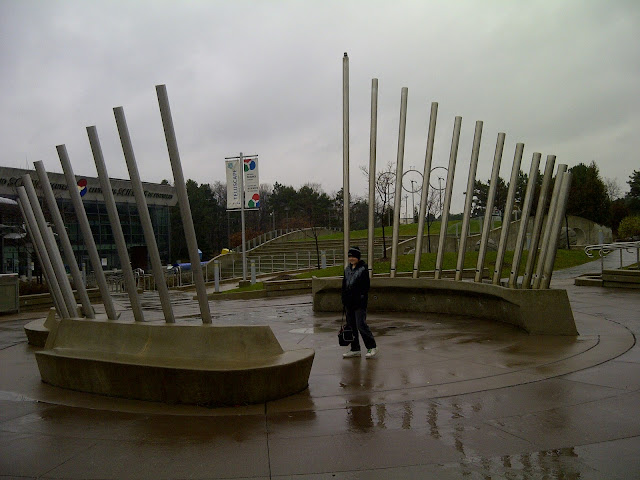Using the model of KMWC (what you know, how you can model the problem, what the question wants you to do, and what information you can cross out), we began to problem solve in the class.
John and Monique volunteered to do the calculations involving conversion from millilitres to litres and the total amount of Coke in the six-pack.
I began this unit by getting the students to understand that most things we encounter on a regular basis are challenges or problems we may need to solve. For instance, if I was an Electrician (which is what I would like to be if I wasn't teaching) and had to do some installations for Kenny, I would need to think about a few things. I used the same KMWC template to guide my thinking.
Just last night I had to do an emergency repair on my kitchen sink and had to do some quick problem solving (I know some basic plumbing, I took some photos to show the salesperson at Lowes, and needed to figure out what pipes and parts I need so I don't flood my kitchen).
 |
| rusted! |
I did not get a chance to post the Science Centre photos but did find my cable in the class so I could upload them. Here are some of the images:
In class we began an experiment using 4 candies placed in the identical volume of water (40ml) and vinegar. In 2 of the cases, the candy was crushed and in the other 2, the candies were left whole. For homework last night, which was not done by a number of students, they had to write an educated guess, or hypothesis, of what they think was going to happen. It was to be done in a chart that they copied into their notebooks.
 |
| The initial drop in the vinegar and water |
 |
| About 30 minutes later |
HOMEWORK
- complete Rewrites for Monday
- have your Math tests signed
- show parent(s) your Art/Writing mark
- complete hypothesis work for four jars and candies
- re-read Malala article
Enjoy your long weekend.
 |
| eating 1 gram of mini marshmellows |
 |
| group shot just off the bus near the Science Centre |
 |
| sun reflection 1 from Room 52 |
 |
| sun reflection 2 from Room 52 |
















No comments:
Post a Comment